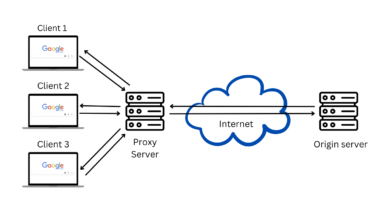
How to Convert Emails from EML to PST file for Outlook
There are multiple methods available to convert the emails from eml to.pst. But the chance is very rare that one specific method will work for all. That’s why in this article you will get multiple methods and also get information about our recommended software to convert EML files easily.
However, before converting emails from EML to PST, you must first understand what an eml and a pst file are.
.eml File
The EML (.eml) file contains only one email message. It preserves the email text, sender information, receiver information, and the message’s date. Because it only retains the contents of a single email message, an EML file is quite compact. EML is the email format used by Outlook Express and Windows Mail.
.pst File
PST means Personal Storage Table. The PST (.pst) is a file that holds the complete mailbox associated with a user account in the Microsoft Outlook program. It differs from an EML file in that it is a huge container for storing several mailbox folders in an organized fashion. Its size may be in the hundreds of gigabytes, and it’s created by a variety of email servers, including Exchange, Office 365, IMAP, POP, and others.
Table of Contents
Why do you need to convert emails from an EML files to a PST file?
There can be various reasons. But most of the time, your reason helps you choose the best method to convert the EML files. Some of the common reasons are that EML files are very rare because they support all the email platforms.
Then the EML files take up much more space. Because.eml files just save a single message, where you need to save the whole mailbox. As a result, you can guess how much storage it consumes. Besides, there could be a damage issue.
How to Convert .eml Emails to .pst Outlook Files
As I have said before, there are multiple methods available. The first is manual, whereas the second is automated. Generally, the manual process is quite hard and you must have some technical knowledge to apply this. It is, however, absolutely free.
On the other hand, if you are ready to spend some money, then the automated process is for you. You can convert it with a few clicks in a little time.
Manual Process 1: Using Microsoft Outlook and Windows Live Mail
The migration is done using Windows Live Mail and Microsoft Outlook in this technique. This is email client software, not third-party software. To convert Windows Live Mail to PST format, you use their built-in capabilities. To convert an EML file to a PST file for Microsoft Outlook, follow the instructions given below.
- Firstly, run Microsoft Outlook and Windows Live Mail.
- Open the File button in the navigation bar of Windows Live Mail.
- Under the Export Mail option, select Mail Message.
- Since choosing Ms Exchange as an export format, click Continue.
- A pop-up window will appear on the screen, stating that all emails will be exported to Microsoft Outlook. Click the OK button.
- Select the required email from the mailbox folder or migrate the whole mailbox of emails, then click OK.
- The migration will proceed after you hit the Yes key. After you’ve finished, a wizard to complete the export will appear. Select the Finish option.
Method 2: Drag and drop the.eml files into the appropriate locations.
It’s a quick task that simply demands you to have Outlook preinstalled. This approach is appropriate when you have a small number of EML files and need to save them in a different location on your machine.
Also, if you don’t have email software to open EML files, the drag-and-drop approach is the best solution. Take the actions outlined below.
- On your computer, launch Microsoft Outlook.
- Then navigate to the directory where the EML files are stored.
- Choose the EML files you wish to migrate from the drop-down menu.
- After that, click and hold on the files.
- Release the hold by moving the cursor to the inbox of Microsoft Outlook.
- The .eml formatted files will be converted to .pst formatted files and imported into Outlook.
Use the Regain EML to PST Converter for Outlook
If you are looking for an automatic process, then the “Regain EML to PST Converter” software is for you. It’s excellence in quality and full service. It’s designed to convert multiple.eml files at a time at the fastest speed.
Besides, it gives you the surety of no data loss. While converting files, it maintains the file’s original structure and metadata. With just a few simple clicks, you can convert emails from.eml to.pst and easily save them to your desired location.
How to Convert Emails from an EML File to an Outlook PST File Using Regain EML to PST Converter
If you are fond of safe and easy tools, then this software is for you. Within a few clicks and within a while, you can convert multiple.eml files into.pst or.msg format. Just follow the below steps.
- First, download (you can purchase the full version) and install the software.
- After running the program, click on the “browse” button.
- Then add the.eml files that you want to convert.
- You need to choose the format from which you need to convert. With this Regain EML to PST Converter software, you can convert EML or EMLX files to PST or MSG files.
- You also have the right to choose the location where you need to save the converted file.








